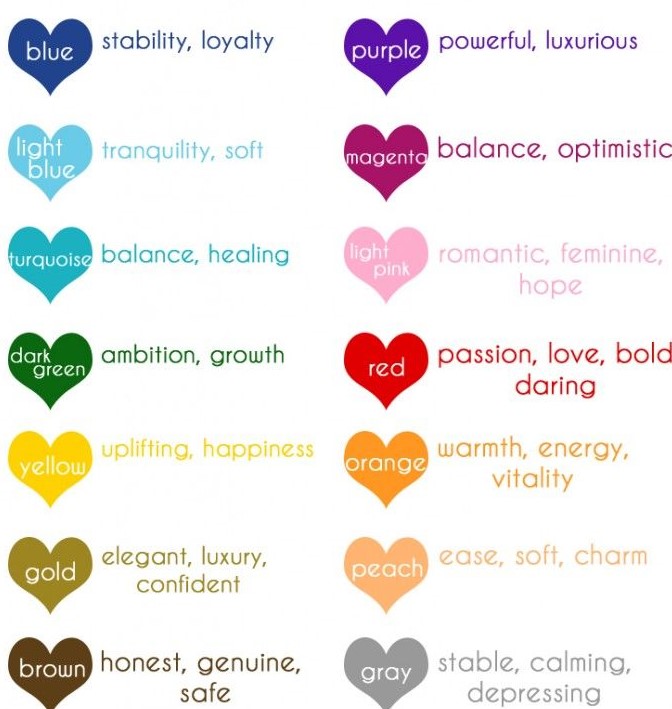Unlocking The Mysteries Of Heart Color Meaning
In a world brimming with symbolism, the meaning of colors can evoke deep emotions and convey messages beyond words. Among these captivating concepts lies the intriguing heart color meaning, which delves into the emotions and sentiments associated with various colors of hearts. Each color reflects a distinct emotional state, shedding light on our feelings and relationships. Understanding the nuances of heart color meaning allows us to better express ourselves and connect with others on a profound level. Whether it's the fiery red heart of passion or the calming blue heart of tranquility, the colors we choose can speak volumes about our inner world.
The heart is universally recognized as a symbol of love and affection, but its color can alter its meaning entirely. As we navigate through life, we may find ourselves drawn to different colors of hearts, each representing a unique facet of our emotional landscape. From romantic love to friendship and empathy, the heart color meaning encapsulates the very essence of human connection.
As we explore the vibrant spectrum of heart colors, we will uncover the emotions, feelings, and intentions each hue represents. This journey through heart color meaning will not only enhance our understanding of ourselves but also improve our ability to communicate with those we care about. So, are you ready to dive into the colorful world of heart symbolism and discover what each color truly signifies?
What is the Significance of Different Heart Colors?
Heart colors carry significant meanings that can help us interpret our emotions and relationships. Here are some common heart colors and their meanings:
- Red: Passionate love and desire
- Pink: Affection, tenderness, and nurturing
- Blue: Calmness, trust, and tranquility
- Green: Growth, harmony, and balance
- Black: Mourning, loss, and sadness
- Yellow: Joy, friendship, and optimism
- Purple: Spirituality, luxury, and ambition
- Orange: Enthusiasm, energy, and warmth
How Do Heart Colors Influence Emotions?
The heart color meaning can dramatically influence our emotional responses. For instance, seeing a red heart may evoke feelings of passion and desire, igniting romantic sentiments. Conversely, a blue heart can bring about a sense of calm and trust, making it ideal for expressing deep friendship or support during tough times.
Can Heart Colors Reflect Our Relationships?
Absolutely! The heart color meaning can serve as a visual representation of the dynamics in our relationships. For example, a yellow heart may symbolize a joyful friendship, while a green heart could indicate a balanced and harmonious relationship. By understanding these colors, we can better navigate our connections with others and express our feelings more clearly.
What Does Each Heart Color Mean in Different Cultures?
Heart color meanings can also vary across cultures. Here are a few examples:
- Red: In many Western cultures, red signifies love and passion, while in some Eastern cultures, it symbolizes good fortune.
- White: Often represents purity and innocence in Western cultures, but in some Eastern cultures, it is associated with mourning.
- Green: In many cultures, green symbolizes nature and growth, but in others, it can signify jealousy.
How Can We Use Heart Colors in Daily Life?
Understanding heart color meaning can enhance our daily interactions. Here are some ways to incorporate heart colors into our lives:
- Use colored heart emojis to express your feelings in messages.
- Choose gifts or cards that feature specific heart colors to communicate your sentiments.
- Incorporate heart colors into your artwork or personal branding.
Can Heart Color Meaning Change Over Time?
Yes, heart color meanings can evolve based on personal experiences and cultural shifts. As we grow and change, the colors we resonate with may shift as well, reflecting our current emotions and life stages. For instance, someone who once identified with a red heart of passion may later find solace in a blue heart representing calmness and trust during a challenging time.
What Are the Psychological Effects of Heart Colors?
The psychological impact of heart colors is profound. Research suggests that colors can evoke specific emotions and reactions. For example:
- Red: Increases heart rate and evokes feelings of excitement.
- Blue: Promotes feelings of peace and reduces stress.
- Yellow: Stimulates positivity and happiness.
How Can We Interpret Someone's Heart Color?
Interpreting someone's heart color can be a valuable tool for understanding their feelings. Pay attention to the colors they gravitate toward in their conversations, artwork, or social media. This can offer insight into their emotional state and help you connect with them on a deeper level.
Conclusion: Embracing Heart Color Meaning in Our Lives
In conclusion, the heart color meaning offers a vibrant tapestry of emotions and connections that can enrich our understanding of ourselves and our relationships. By embracing the significance of heart colors, we can better express our feelings, navigate our connections, and foster meaningful interactions with those around us. So the next time you encounter a heart in a specific color, take a moment to reflect on what that hue signifies in your life and the emotions it evokes.
Exploring The Connection: Are Scott Speedman And Antony Starr Related?
Unveiling The Life And Career Of Larisa Oleynik
Unveiling The Life Of Peter Gadiot's Wife


